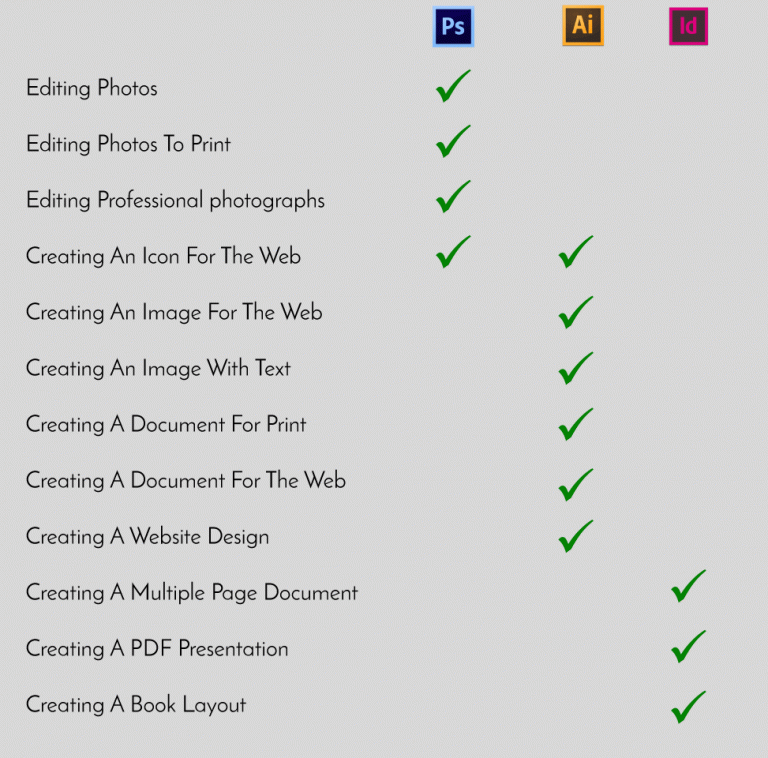
Source: copied from blog.aisplstore.com for original link click here
Illustrator vs. Photoshop vs. InDesign
Who’s who and what’s what?
In today’s post we will help you distinguish between these three products.
All of these are the major canvas for all most every kind of modern art, be it photography, graphic designing or architecture.
These softwares are making huge rounds in every sector today due to the sudden boom in the digital marketing and advertising fields.
So it’s important for everyone to know the basic difference between then even if you aren’t an artist yourself.
Use the wrong design program to create a certain element of your artwork, and you might end up with blurry text, sloppy layouts, or a logo that you can never resize without turning it into a pixelated nightmare.
But these three programs together, however, turns them into the ultimate dream team. You can maximize the strengths of each Adobe product while also minimizing their weaknesses.
When To Use Illustrator?
Illustrator is technically the favourite product for most of the designers. You can produce pretty much any type of image or file from it. Illustrator is different from Photoshop in that it is a vector based software, meaning instead of working on a pixel level, it works using lines. You can increase or decrease the size of whatever make in Illustrator, and it will never lose it’s detail. Now when you output that into a rastor based image such as a jpg, you may end up with some pixelation, but when resizing within Illustrator, you’ll never lose that detail. If you continuously resize your image in Photoshop, you will certainly distort it.
When to use Photoshop?
Photoshop is a great tool, but people often use it for the wrong reasons. Photoshop is a rastor based software, meaning it works on a pixel based level. Images built using vector based software can easily become pixelated. It is the ideal software when dealing with images.
When to use Indesign?
There should be no confusion about when to use InDesign – its specific purpose is for laying out printed materials; that’s what it is designed to do. This could be brochures, newsletters, ads, business cards or books. Virtually anything that is made up of a combination of blocks of text, photos or other artwork. Its purpose is to take the elements that you create in Illustrator and Photoshop and put them together in one place. InDesign excels at projects that require multi-page layouts or master layouts where one theme reoccurs on multiple pages. Its text wrap functionality (where you can literally wrap text around images or objects) is much simpler and easier to use than it is in Illustrator.
This software should be your last step in creating a beautiful work of art. It helps you organize everything with a great layout!
